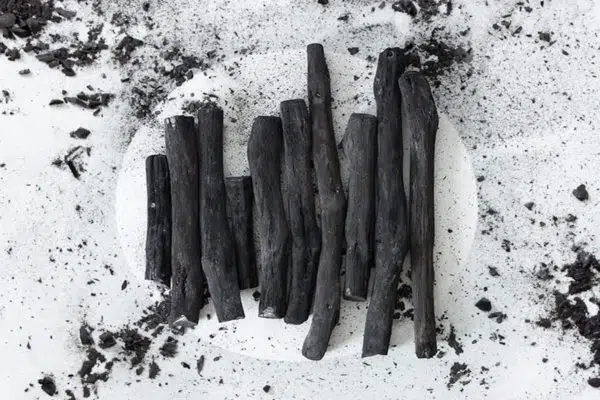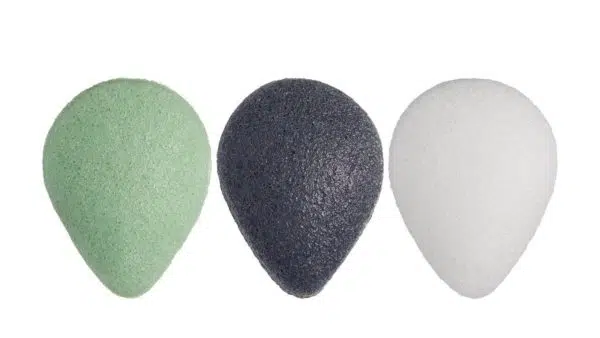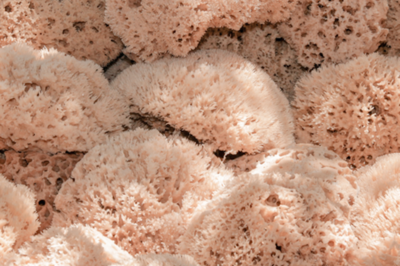Table of Contents[Hide][Show]
From washcloths to electronic face brushes, the evolution of tools for beauty maintenance has been amazing. But it can also be overwhelming when deciding what to use on your face and body.
The sponge review
Sponges are a popular choice in many skin routines because they are a versatile tool with a wide range of benefits and options. This review should help you compare some of the popular sponge choices available.
Traditional Loofah
What is it?
The loofah (luffa) is any of a genus of tropical plants of the gourd family. It’s grows on a viney plant in many parts of the world, including the US. They are large elongated fruits that are often eaten once mature.
When the loofah has matured and dried completely, the outer skin is peeled away, revealing a dried fibrous interior. This interior is used for sponges and other body products.
Pros and Cons
Loofahs are a proverbial petri dish for bacteria. You must replace often, about every three to six weeks. They are amazing for exfoliating your skin but can cause skin inflammation and irritation if used to often or too harshly. These are not gentle exfoliators.
However, loofahs are very cost effective. You can purchase them at affordable prices or grow them at home if you’re able.
If left wet, they can deteriorate more quickly over time. They are biodegradable and can composted once you are done using them.
How to use
Loofahs are extremely coarse when dry. Use water to wet the loofah and soften it. The amount and temperature of the water can affect the loofah’s scrubbing ability. Squeeze repeatedly to allow water to absorb more easily. If you’d like the loofah softer, warmer water will accelerate softness. If you would like it a bit more coarse, gradually add water.
Once it has reached your desired texture, add your soap and scrub in a circular motion. Be sure to be mindful of more delicate parts of the body like the face, underarms, and feminine areas. These areas require a more gentle touch than the rest of the body.
How to Maintain and Store
Always rinse thoroughly after use, making sure no soap is left in the loofah. Store in a space that allows it to dry completely between uses.
Loofahs are durable enough to wash with laundry in hot water or boiled for up to 5 minutes. Weekly cleaning is a good idea, since loofahs are a breeding grounds for bacteria.

Natural Sea Sponge
What is it?
Sea sponges are living organisms harvested from the ocean. Approximately 8,000 species can be found in both freshwater and oceans around the world. Species vary by location.
The wool sponge, silk sponge, and honeycomb sponge are a few of the most common sponges used.
Pros and Cons
Different sponge species offer different exfoliating choices. This sponge must be cleaned properly, or it can clog pores due to old skin cells remaining on the sponge. It may be too abrasive for some skin types.
Sea sponges are not typically harvested in ways that damage the environment, and typically grow back. There are a variety of sponges to choose from based on where they are procured.
A natural option, they aren’t created with harmful chemicals. They are fairly easy to clean, and can last for many years (depending on the type of sponge) if properly maintained. They are a natural, renewable resource that decreases waste.
How to use it
Sea sponges are typically a bit hard when they are new. It’s always a good idea to wash sea sponges thoroughly before using them on your face.
Saturate your sponge with water and soap (anti-microbial, if possible). Repeatedly squeeze the soap in into the sponge, and rinse repeatedly until the water runs clear. Once the sponge is clean, add your desired soap to the sponge and apply to your face. Use gently in a circular motion.
How to Maintain and Store
Rinse your sponge thoroughly after each use with warm water, until the water runs clear. Twist or squeeze out the excess water from the sponge, then place it in a dry area, and allow it to dry naturally.
To clean your sea sponge, soak it in a mixture of 1 ½ tablespoons of baking soda and 1 cup of warm water if you have a small sponge. If your sponge is large, use a larger ratio of the mixture to accommodate your sponge’s size.
You can also soak it in a mix of 1 cup of water and ¼ hydrogen peroxide mixture. It’s best to clean it this way every 2 weeks.
Place your sponge in a dry area, allowing it to dry fully and naturally.
Natural Cellulose Sponge
What is it?
The material used to create cellulose sponges originates from vegetable pulp, and other natural fibers like cotton. They are eco-friendly products, and don’t contain harsh chemicals.
Pros and Cons
It can be really tough to rid these sponges of bacteria, as they tend to hold onto residue, and rapidly deteriorate if too much bacteria remains in the sponge. It’s best to throw away these kind of sponges if they cannot be cleaned properly.
These sponges are typically biodegradable. When wet, the surface becomes soft and is smooth on the skin. They have good elasticity when wet and absorb a great deal of water very quickly.
How to Use It
After you have soaked your sponge with water, allowing it to expand to its full size, add your cleanser to your sponge, then apply it to your face in a circular motion.
Start gently and regulate pressure on your face. Depending the brand of sponge, it may too much friction against your skin.
How to Clean, Maintain and Store
Rinse your sponge thoroughly until the water runs clean and clear. Store the sponge in a dry place, allowing it to completely dry.
To sterilize, you can submerge in boiling water for 3 – 5 minutes. Allow the sponge to cool down before squeezing out the excess water.

Charcoal Infused Sponge
What is it?
Infused with charcoal (typically bamboo), this sponge is meant to gently cleanse the skin. They are either synthetic or plant based. The charcoal is infused not only for cleansing the skin, but purifying it as well.
Pros and Cons
If it’s a natural sponge, it’s biodegradable. The charcoal infusion helps to more easily remove makeup, oils, and dirt from the skin,and may help with the appearance of a more even skin tone.
Depending on material composition, the sponge may not last beyond a month. The infusion could be too harsh for sensitive skin, so a patch test may be necessary. Conversely, it is a gentle exfoliator, so some may find they need a tougher exfoliator.
How to use it
Wet the sponge, squeezing gently allowing the water to come in and out. Remove the excess water from the sponge, then add your cleanser to it’s surface.
Moisten your face and move the sponge in circular motions on your face.
How to Clean, Maintain and Store
Rinse the sponge under running water and squeeze any leftover soap from the sponge. You can boil this sponge (depending on material) for about 2 minutes, or microwave for up to 1 minute.. Once cooled, remove excess water and allow to dry.
Note – These sponges can dry out drastically if overcooked, and can become damaged.

Konjac Sponge
What is it?
The Konjac is a Japanese sponge is made from fibers from the konjac (konnyaku), a amorphophallus vegetable plant also known as “elephant yam”. This facial sponge is 100% all natural, and very gentle on the face.
Pros and Cons
This sponge can last up to 3 months, but it’s recommended it be replaced every 4-6 weeks, and even sooner if not properly maintained. It isnot a strong exfoliator and extremely gentle.
There are a variety of these sponges. Each color signifies a different infusion of an active ingredient. For example, a green sponge may have green tea infusion. This allots for a wider selection of nutrient infusions to help improve the appearance of your skin. However, they can be irritating to more sensitive skin.
An eco-friendly product, they are 100% biodegradable, and composed of all natural plant ingredients. The texture is very soft and does not scratch the skin when washing. These sponges often contain many different vitamins and minerals, and makes a great sponge for people with sensitive skin.
How to use it
Soak the sponge long enough for it to soften and expand, approximately 5 to 10 minutes. Soak it for twice as long if it is brand new.
Squeeze the excess water from the sponge, then add your favorite facial cleanser (or not). Gently cleanse your face by scrubbing in a circular motion.
How to Clean, Store and Maintain
Rinse your sponge with warm, running water to remove all of the soap and debris. Gently compress the sponge between the palms of your hands to remove the excess water. It isn’t a good idea to squeeze or twist the sponge, as it can be easily damaged.
It’s recommended you hang dry the sponge in an area with limited moisture. Keep it dry between uses. It can be stored in a sealed container in the refrigerator between uses. Just rinse it and soak it in warm water before using.
To minimize bacteria buildup, try soaking the sponge in extremely hot, but not boiling, water for approximately five minutes. Let the sponge cool before removing the excess water, and allow it to air dry. Be careful of using water that is too hot, as it can cause the sponge to become malformed.
Which natural sponge options are your favorite? Share with us in the comments.








I am looking for a gentle exfoliating body sponge made from eco friendly materials. I have eczema and also a skin disease. Do you have any recommendations please?
Thank you